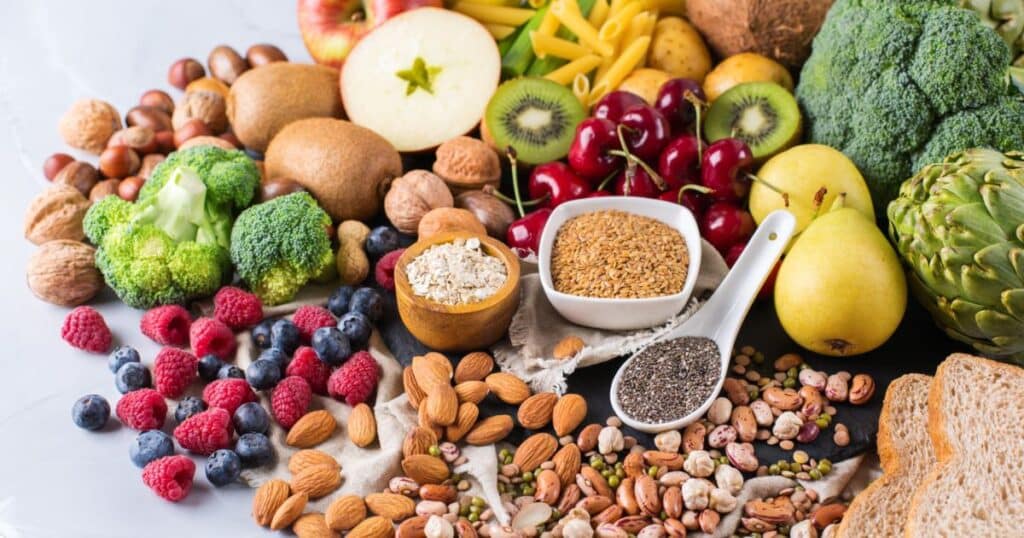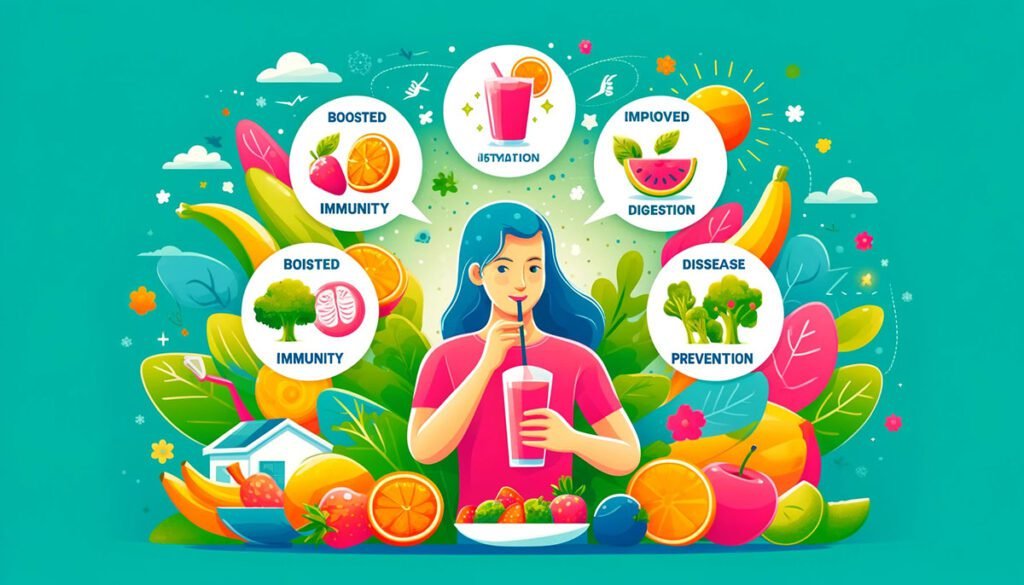When it comes to fruits and vegetables, most of us are accustomed to peeling away the outer layers before consuming them. However, what many people don’t realize is that these peels are often packed with essential nutrients that offer numerous health benefits. At WellHealthOrganic.com, we believe in harnessing the full potential of nature’s bounty, including the often-overlooked peels of fruits and vegetables. In this comprehensive guide, we’ll explore the nutritional benefits of eating peels and share easy ways to incorporate them into your diet for optimal health and wellness. Let’s peel back the layers and discover the hidden treasures within with WellHealthOrganic.com’s expert insights.
Understanding the Nutritional Value of Peels
Fruit and vegetable peels are rich in vitamins, minerals, antioxidants, and dietary fiber, making them a valuable addition to your diet. While the exact nutrient composition may vary depending on the type of produce, here are some common nutrients found in peels:
- Vitamins: Fruit and vegetable peels are a concentrated source of vitamins, including vitamin C, vitamin A, vitamin K, and various B vitamins. These vitamins play essential roles in supporting immune function, promoting healthy skin and vision, and regulating energy metabolism.
- Minerals: Peels contain essential minerals such as potassium, magnesium, calcium, and iron, which are important for maintaining electrolyte balance, supporting bone health, and facilitating various biochemical processes in the body.
- Antioxidants: Many fruit and vegetable peels are rich in antioxidants, such as flavonoids, phenolic compounds, and carotenoids, which help neutralize free radicals and protect against oxidative stress and inflammation.
- Dietary Fiber: Peels are a significant source of dietary fiber, including soluble and insoluble fiber, which promotes digestive health, regulates blood sugar levels, and helps maintain a healthy weight by promoting satiety.
Benefits of Eating Peels
Incorporating fruit and vegetable peels into your diet can offer a wide range of health benefits, including:
- Improved Nutrient Intake: Eating peels allows you to maximize the nutritional value of fruits and vegetables, ensuring that you get the full spectrum of vitamins, minerals, and antioxidants they have to offer.
- Enhanced Digestive Health: The dietary fiber found in peels promotes regularity, prevents constipation, and supports a healthy gut microbiome by serving as fuel for beneficial gut bacteria.
- Heart Health: Antioxidants and fiber in fruit and vegetable peels have been linked to a reduced risk of heart disease by lowering cholesterol levels, improving blood pressure, and supporting overall cardiovascular health.
- Weight Management: The high fiber content of peels can help promote feelings of fullness and satisfaction, reducing overall calorie intake and supporting weight loss or weight maintenance goals.
- Skin Health: Certain nutrients found in fruit and vegetable peels, such as vitamin C and antioxidants, can help promote collagen production, protect against UV damage, and maintain youthful-looking skin.
Easy Ways to Incorporate Peels into Your Diet
- Smoothies: Add peeled fruits like apples, pears, and kiwis, along with their peels, to your favorite smoothie recipes for an extra boost of fiber and nutrients.
- Roasted Vegetables: Roast vegetables like potatoes, sweet potatoes, and carrots with their skins on to retain their nutritional value and add a crispy texture to your dishes.
- Homemade Chips: Make your own healthy chips by thinly slicing vegetables like sweet potatoes, beets, and zucchini, leaving the peels intact, and baking them in the oven until crispy.
- Soups and Stews: Leave the peels on vegetables like squash, pumpkin, and eggplant when making soups and stews to enhance their flavor and nutritional content.
- Blended Sauces: Blend peeled tomatoes, along with their skins, into sauces and salsas for added texture and flavor, as well as a boost of lycopene and other antioxidants.
- Salad Toppings: Add thinly sliced peels of cucumbers, carrots, and radishes to salads for a colorful and nutritious crunch.
- Fruit Infused Water: Add citrus peels, such as lemon or orange, to water for a refreshing and flavorful beverage that also provides a dose of vitamin C and antioxidants.
Antioxidants and Other Hidden Perks of Eating the Peel

Beyond their impressive vitamin and mineral content, fruit and vegetable peels are also rich sources of antioxidants and other beneficial compounds that can profoundly impact your health. Let’s delve into some of the hidden perks of eating peels:
Antioxidant Power
Peels are packed with powerful antioxidants that help protect your cells from damage caused by free radicals, which can contribute to the development of various chronic diseases:
- Carotenoids: Compounds like beta-carotene and lycopene, found in abundance in pumpkin, carrot, and sweet potato peels, have been shown to have potent antioxidant and anti-inflammatory properties, potentially reducing the risk of certain cancers.
- Flavonoids: These plant-based compounds, such as anthocyanins (found in cabbage, red grapes, and berries), have been linked to lower levels of inflammation and a reduced risk of chronic diseases like heart disease and certain types of cancer.
- Ellagic acid: Present in strawberries and raspberries, this antioxidant has been associated with a lower risk of heart disease and may also possess anti-cancer properties.
Mood-Boosting Compounds
Did you know that citrus peels contain aromatic compounds like limonene and naringin that have been shown to have calming and mood-boosting effects? These compounds may help alleviate stress and anxiety, making citrus peels a valuable addition to your diet for both physical and mental well-being.
Detoxification Support
Consuming fruit and vegetable peels may also support your body’s natural detoxification processes. These nutrient-dense skins can stimulate bile production, which helps to emulsify and remove toxins from the body. Peels may support phase 2 liver detoxification, further enhancing your body’s ability to eliminate harmful substances.
By incorporating peels into your diet, you’re not only getting a boost of vitamins, minerals, and fiber, but also a wide array of antioxidants and other protective plant compounds that can have profound impacts on your overall health and well-being.
Tips for Conveniently Adding More Peels to Your Meals

Now that you understand the incredible nutritional benefits of fruit and vegetable peels, you may be wondering how to incorporate them into your diet easily and conveniently. Here are some simple tips to help you get started:
- Bake Peel Chips or Fries: Transform sweet potato or pumpkin peels into deliciously crunchy chips or fries by tossing them with a little oil, herbs, and spices, and baking until crispy. These make for a fiber-rich, nutrient-packed snack or side dish.
- Blend Peels into Smoothies: Add nutrient-packed citrus or banana peels to your morning smoothie or juice for an extra antioxidant punch. Just be sure to remove any bitter white pith from the citrus peels first.
- Use Peels in Soups and Sautees: Instead of peeling carrots, zucchini, or potatoes, simply grate or thinly slice them (with peels on) and add them to your favorite soups, stews, or sauteed dishes for an extra boost of fiber and nutrients.
- Eat Raw Peels with Dips: Enjoy the peels of apples, pears, kiwis, mangoes, and papayas raw by dipping them in nut butter, yogurt, or hummus for a portable and nutritious snack.
- Zest and Bake with Peels: Use the zest of citrus peels to add flavor and nutrients to baked goods like cookies, cakes, and breads. You can even try making sweet orange peel candy for a tasty treat.
- Get Creative with Veggie Scraps: Don’t toss those turnip greens, beet stems, or broccoli stalks! Roast them with a bit of oil and seasoning for a flavorful and nutrient-dense side dish or snack.
Remember, the key is to start slowly and incorporate peels gradually into your meals and snacks. Begin with one or two types of peels that you enjoy, and experiment with different recipes and preparation methods to find what works best for you and your family.
THE NUTRITIONAL PROFILE OF FRUIT AND VEGETABLE PEELS

Overview of Nutrients
Fruit and vegetable peels are rich in vitamins, minerals, and antioxidants, often surpassing the nutritional value of the flesh. These nutrients are vital for maintaining good health and preventing chronic illnesses. Peels contain polyphenols and carotenoids, potent antioxidants that guard against oxidative stress and reduce inflammation.
Fiber Content
Peels are a great source of dietary fiber. Fiber is crucial for digestion, helping to ensure regular bowel movements and prevent constipation. It also aids in weight management by promoting satiety and lowering overall calorie intake. Additionally, fiber helps regulate blood sugar levels, which benefits people with diabetes.
Specific Examples
- Apple Peels: Rich in quercetin, an antioxidant with anti-inflammatory and antihistamine effects. High in fiber, they help lower cholesterol, contributing to heart health.
- Banana Peels: Loaded with potassium, essential for heart and muscle function. They also contain tryptophan, which improves mood and sleep.
- Orange Peels: Packed with vitamin C and flavonoids like tangerine and nobiletin, which have anticancer and antidiabetic properties. They also contain pectin, a fiber that supports digestion.
- Potato Peels: An excellent source of iron, potassium, and vitamin C, along with significant fiber, which aids digestion and supports a healthy gut microbiome.
By understanding the nutritional value of these peels, you can make informed choices about adding them to your diet for better health.
HEALTH BENEFITS OF CONSUMING PEELS

Digestive Health
Eating fruit and vegetable peels can greatly improve digestion due to their high fiber content. Fiber adds bulk to stool, promoting regular bowel movements and preventing constipation. It also acts as a prebiotic, feeding beneficial gut bacteria and supporting a healthy microbiome. This can improve nutrient absorption and reduce gastrointestinal issues like irritable bowel syndrome (IBS).
Immune System Boost
Vitamins and antioxidants in peels boost the immune system. Orange peels, for example, are rich in vitamin C, an antioxidant that enhances immune function by stimulating white blood cell production. Polyphenols and carotenoids in various peels protect cells from oxidative damage, lowering the risk of chronic illnesses and infections.
Conclusion
Don’t let the nutritional treasures of fruit and vegetable peels go to waste! By incorporating peels into your diet, you can enhance your intake of vitamins, minerals, antioxidants, and dietary fiber, supporting overall health and wellness. Get creative in the kitchen and experiment with different ways to enjoy the nutritional benefits of peels in your favorite dishes and recipes. With WellHealthOrganic.com’s commitment to holistic health and wellness, you can unlock the full potential of nature’s bounty and nourish your body from the inside out.
